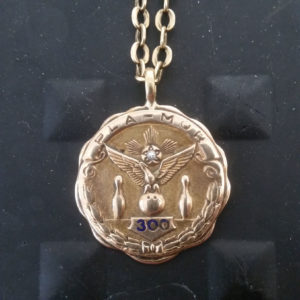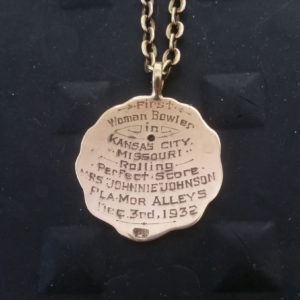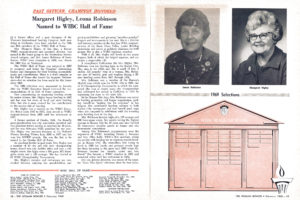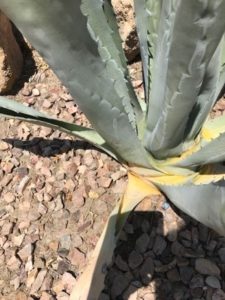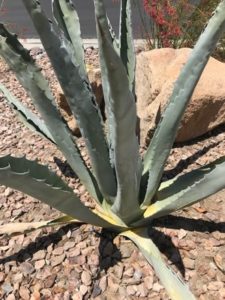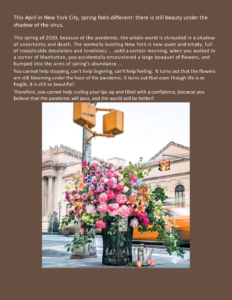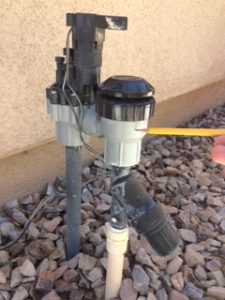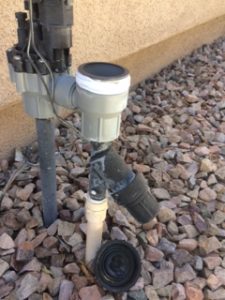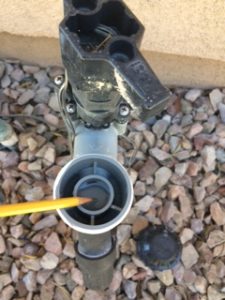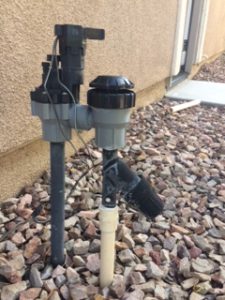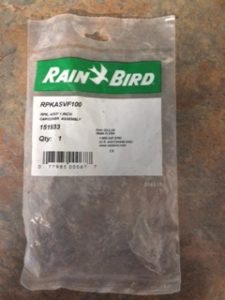Do you have an interesting fact about yourself to share with your neighbors? ☞ Click Here to Submit
Lifestyles Stay Connected
Wi-Fi Irrigation
 Many residents have expressed various opinions about the pros and cons of a bulk internet agreement. It could be a “good thing” for your landscaping!
Many residents have expressed various opinions about the pros and cons of a bulk internet agreement. It could be a “good thing” for your landscaping!
There are so many new products on the market that function “wirelessly” using the internet. In common language, they are “Wi-Fi based.” What is the definition of Wi-Fi you ask? Well, I don’t think it is “Wireless Internet For Idiots” as some have proposed.
According to one internet source, the definition of Wi-Fi is as follows:
“A local area network that uses high frequency radio signals to transmit and receive data over distances of a few hundred feet.”
A Wi-Fi unit does not need to be hard-wired into another communication device to function and in some cases, may operate on batteries rather than traditional electricity.
Recent additions to the wireless product market include doorbells with audio and video, home security systems, HVAC thermostats, Amazon Alexa, Google Home, wireless speakers for your sound system, and of course, puppy cams!
Did you know that there are also wireless irrigation controllers? I’ve used one for almost two years and it has proven to be quite effective. I live in Colorado in the summer. Thanks to my internet-based “smart” Wi-Fi controller, I can control all of the functions of my sprinkler system from Colorado! Now that year-round internet service is coming to SCSH from Frontier, this might be something you want to consider.
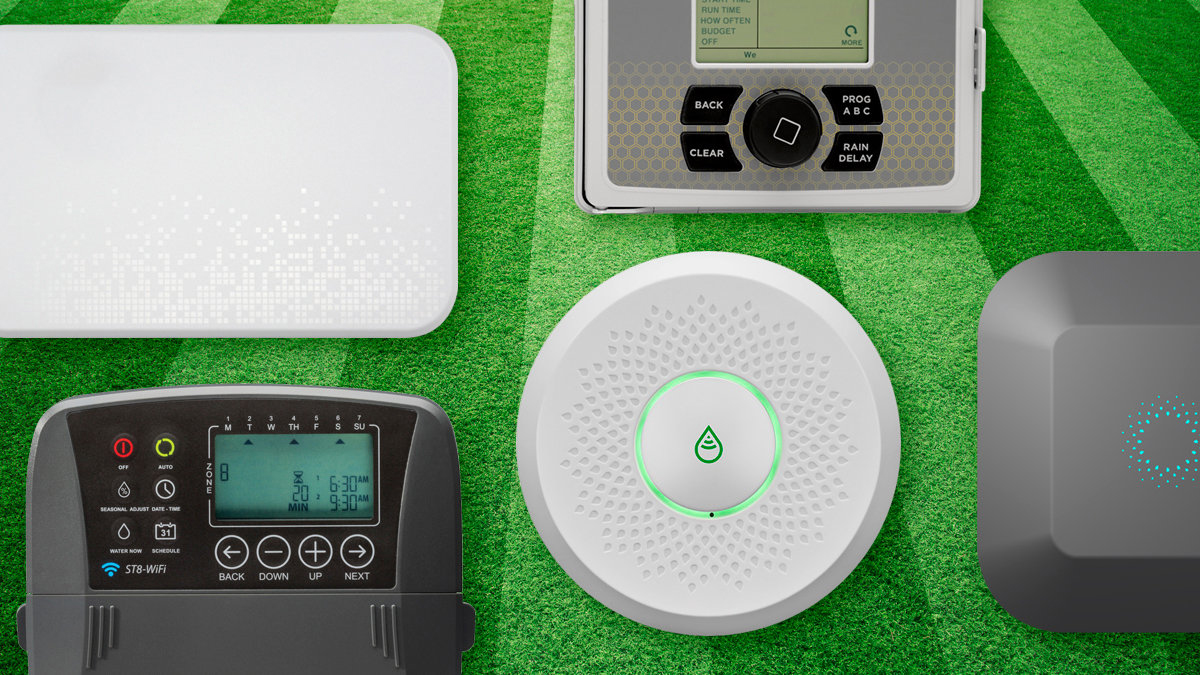
What is a “smart” controller? A smart irrigation controller has built-in water saving features which may include a sensor to adjust to the optimal sprinkler run-time based on local weather conditions.
Here are just a few of the great benefits of owning this product, from my personal experience:
Earlier this Spring, my neighbor called me to say that he had spotted a broken drip head in our front yard. It was hard to miss since it was spraying water into the street. Within minutes I had shut off that zone using my cell phone . . . or my iPad . . . or my computer . . . I can’t remember which one I used, but any one of them would have worked! Then it was just a matter of contacting the gardener to schedule a repair. When he finished the repair, I could re-start that zone, or he could have, since he has the username and password for my system. Alternatively, I could have suspended watering in that zone for a period of time (long enough for him to make the repair) and then it would have re-started on its own.
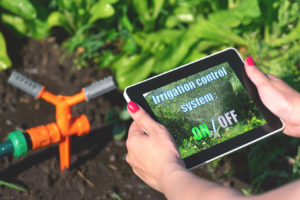 Or how about this one . . . every fall and spring I go around and check all the heads in every zone. Since I can start and stop the water flow in each zone with my phone, there is no need to run back and forth to the controller when I locate a broken or clogged head (or worse, a leaking pipe) or to change zones.
Or how about this one . . . every fall and spring I go around and check all the heads in every zone. Since I can start and stop the water flow in each zone with my phone, there is no need to run back and forth to the controller when I locate a broken or clogged head (or worse, a leaking pipe) or to change zones.
Although I don’t believe I have saved a great deal of water (since I don’t want to lose plants in the summer and we don’t have an abundance of rain), there is potential for water savings from “smart” controllers.
The manufacturer of my unit has developed irrigation management software which automatically adjusts the irrigation schedule using real-time, internet-sourced data based on local weather – it can suspend irrigation if it’s forecast to rain, or if it has rained a certain amount (you set the parameters) or if the wind is blowing. In my mind the best feature is that it will water longer or more often when temps hit certain levels, and again you are able to determine when this should occur.
Here are questions you might want to consider before investing in a Wi-Fi controller:
- Make sure the irrigation software is compatible with your phone or computer operating system (e.g. iOS or Android on a cell phone); and make sure it is compatible with Frontier’s equipment
- Is there a monthly or annual fee to use the software?
- If the controller loses internet-connectivity for more than 24 hours, will you receive an email to that effect?
- Will the clock need to be “re-set” if power goes out, and will the memory retain the watering schedule?
- Does the model you are considering have a feature that enables the user to also install a flow meter to monitor for leaks?
- Can the unit be controlled from the timer box as well as remotely? This is important if you don’t want to give your gardener access to the Wi-Fi function.
- Does the unit come with a weather-protective, lock-able box or does that need to be purchased separately?
- Prior to purchasing, make sure you have a strong cell signal on your phone when you are standing next to the current controller.
- Make sure you understand the operational features and the associated terminology of the unit you are considering. If there is a video on how to use it, watch it before purchasing.
- Installation should be performed by an irrigation specialist. Also note that some controllers are direct-wired (hardwired) and some are plug-in. If your existing unit is hardwired and you choose a plug-in model you may need the help of an electrician to make the conversion.
- One note to self . . . if you change your settings seasonally, be sure to write down the most recent settings before programming for the new season. I didn’t do that the first fall and had to try to remember what worked when I adjusted for summer the next year!


You may have heard that Coachella Valley Water District (CVWD) and Indio Water Authority offer smart controllers (possibly at no charge) to their respective customers who don’t already have one. Here is a link to the page on the CVWD website which details info about the various types of landscape-related rebates that may be available: CVWD Rebates
The CVWD Rebate and Conservation department is very helpful, so don’t hesitate to contact them with questions. Keep in mind that the free controllers may be an upgrade to what the builder provided, but they may not be as functional as what is available from other manufacturers. There may be costs associated with installation in addition to the cost of the controller, especially electrical modifications, if you are a CVWD customer.
Indio Water Authority (IWA) will let their customers choose a smart controller from any manufacturer. The homeowner purchases the controller and after installation, would apply for a rebate. The form attached below does not contain specific info on rebates for irrigation controllers. Contact the rebate department at IWA to see if the model you have selected qualifies for the rebate, what the requirements are for proof of purchase and installation, and what the maximum reimbursement might be before buying any product. Here is a link to the rebate form: IWA Rebate Form
Indio Water Authority has a fabulous website that gives their customers a wealth of info, including notification if they detect higher-than-normal water usage. Be sure to provide them with your contact info to take advantage of this service.
Regardless of which controller you decide to install, educate yourself on the various features and benefits, as well as final installed cost, and then make your decision. Remember, if you’re going to New York, don’t buy tickets for Chicago. Get the controller that best suits your needs. It’s a one-time expense that should last quite some time and could save some aggravation.
Prepared by:
Amy Tomlinson
President, SCSH Desert Gardeners Club
Corey Unfried
Membership Chair, SCSH Desert Gardeners Club
Did You Know? – Julie Johnston
Long-time resident Julie Johnston (who also brings us Comedy Night) is the granddaughter of Mrs. Leona Robinson. What’s remarkable about Mrs. Robinson is that she won the Women’s International Bowling Championship in 1929. She lived in Kansas City and wrote newspaper articles about bowling. Mrs. Robinson even traveled with the best male bowlers of her day throughout Kansas City.
Do you have an interesting fact about yourself to share with your neighbors? ☞ Click Here to Submit
What Is a “USDA Hardiness Zone” and Other Gardening Tidbits
When choosing a plant for the desert, one, but not the only way to gauge survival is to check the USDA Hardiness Zone for that particular plant. This information can (sometimes) be found on the plant tag, or by searching the internet for information pertaining to the plant you are considering. The Coachella Valley is in USDA zone 9b, which encompasses a low temperature range of 25 to 30 degrees. Here is a USDA zone map for the state of California: https://planthardiness.ars.usda.gov/PHZMWeb/.
This rating, however, only encompasses low temps, not high temps, so be sure to ask a nurseryman before buying or ordering a plant. Often if you can’t find it in a local nursery, it is because it won’t survive our extreme heat. Conversely, if you do see it at a big box store, it might survive the desert heat, but not for long! Many other factors affect survivability too – sun vs. shade, water needs, directional exposure and soil nutrients, just to name a few. Good questions to ask are “have I ever seen this actually growing in our area?” Or, “how much am I willing to risk to see if it will grow?”
Recently I purchased a tiny pot of cilantro at a hardware store. Now a hardware store is not where I usually buy my plants, but it was there, and there you have it. In the pot was a plant tag, and on the tag was a website called bloomiq.com. Never having heard of this website and being the inquisitive type, I did an online search when I got home. What did I find? An extremely comprehensive website featuring:
- A searchable plant catalogue with photos and growing details including hardiness zone ratings
- Plant collections by topic – hummingbirds, deer resistant, sun, shade
- A section called “Inspiration” which contains among other subjects, a directory of cut flowers with care tips, a piece on Fairy Gardens, one about Fertilizer and one I found especially interesting – "Vertical Gardens"
And there is so much more!
The website is owned by MultiPackaging Solutions. FYI – MultiPackaging Solutions is a leading manufacturer of inventory and custom-made tags, signs and other marketing materials for plant growers and garden centers; cards, wraps, baskets, bows and other supplies for the florist industry; and labels, boxes and other packaging materials for pharmaceuticals and other industries.
Now you will still need to evaluate your proposed garden addition prior to buying, but this website just might help you make the decision. I encourage you to do some “kitchen table surfing” on bloomiq.com when you have some free time!
Although a website can be a good source of info, nothing beats having someone with “local knowledge.” SCSH Desert Gardeners Club Member Jim Kieft is the club’s “go-to” guy for all things garden related. Jim is retired from a long career in the gardening and landscape industry. Most recently he worked at Moller’s Garden Center. Jim recently answered a question about an agave that was yellowing at the base. The homeowner thought it might be a disease, but the answer was actually “too much water”. Water was being applied twice a day by the home irrigation system. Given our marginally designed irrigation systems, the quantity of water that each plant receives can be difficult to control. Jim suggested that this agave be watered with a handheld hose not more than three times per week. Water should be applied away from the base of the plant to encourage roots to spread in the search for water. Watering a few times per week gives the soil a chance to dry out before new water is applied, discouraging root rot.
In lieu of hand-watering, homeowners with this issue might want to evaluate the watering capacity and location of the drip head being used on the plant. If the drip head is dispensing a large amount of water over the designated time, i.e. 1 gal. per hour over “x” time, a lower-flow head could be used. Also, if there is just one dripper at the base of the plant, drip heads could instead be placed in a circle around the plant, each dispensing a lesser quantity of water over “x” time. Using a reputable irrigation expert is always recommended for major system changes.
I just have to mention that being a member of the SCSH Desert Gardeners Club gives you access to this expertise as well as a wealth of other gardening information via our website, meetings and field trips. Check us out at scshdesertgardeners.com.
One last thing to consider . . . a largely un-mentioned benefit of having Frontier Communications as the universal provider of internet for SCSH is year-round vs. “seasonal” internet service. There are so many internet-based safety and convenience products available now – smoke alarms, security cameras, alarm systems and doorbells. Did you know there are wi-fi based irrigation controllers? I have one and have found it to be extremely helpful in managing the water needs of my landscaping, even while I am in Colorado! Our next post on “SCSH Stay Connected to Nature” will likely be about this type of irrigation timer, so be sure to check back!
Submitted by:
Amy Tomlinson, President, SCSH Desert Gardeners Club
Corey Unfried, SCSH Desert Gardeners Club, Membership Chair
Jim Kieft, Member-at-large and “Go-To” Guy
Jackrabbit Homesteading in the Mojave
The Desert Institute presents a virtual presentation on Friday, July 10 at 4 pm on "Jackrabbit Homesteading in the Mojave" with Julia Sizek.
Anyone who has driven through Wonder Valley, in the Morongo Basin, has seen the what geographer Alex Clark called in 1971 the minimum small tract cabin, a twelve by sixteen foot building footprint that barely met the minimum requirements of the Small Tract Act at the time when it was permitted and built under the then-lax rules of San Bernardino County. Today, these cabins are—for lack of a better term—ruin porn—combining the affective pulls of a yesteryear and today’s love of tiny homes with the dilapidation of pastel colors, clean lines, and hantavirus.
In this presentation, Julia will tell you stories of what people thought about what are variously called shacks, vacation cabins, and perhaps most erroneously jackrabbit homesteads, the last of which was a valiant stretch on the part of real estate marketers. This is a story of the manufacturing of a dream that was always-already falling apart at the corners where the house never quite stayed together. That is, the Small Tract Act of 1938--the Congressional action that gave away five acres parcels for new vacation homes--was never quite the dream we think it is now. Even back then, so-called jackrabbit homesteaders and its promoters were trying to use the law to enact their dreams about homesteading that rang equally false then as they do now. This is a story of speculative dreams and their abandonment, and the legacies that they left behind.
Julia Sizek is a PhD candidate in anthropology at the University of California, Berkeley. Her research concerns contemporary land use and conflicts over land management in the Eastern Mojave Desert in southeastern California. As part of her research, Julia has worked with a number of local desert organizations, including the Native American Land Conservancy, Coachella Valley History Museum, Mojave Desert Land Trust, and Twentynine Palms Historical Society.
Lewis Miller Design Flower Flash
Here is a PDF file that someone sent me:
Lewis Miller, owner of floral design company Lewis Miller Design, has long transformed New York City's most grittiest spots into giant flower displays. He calls them "flower flashes".
Also, I’ve included a short YouTube video below by Lewis Miller on floral arranging.
Amy Tomlinson
President, SCSH Desert Gardeners Club
New York Botanical Garden Orchid Show – Virtual Tour
Here is a really nice video from the New York Botanical Garden. Their annual orchid show had to be cut short (NYBG is still closed as of today) so they did this virtual tour.
Amy Tomlinson
President, SCSH Desert Gardeners Club
Established in 1891, The New York Botanical Garden (NYBG) is distinguished by the beauty of its landscape, collections, and gardens, and the scope and excellence of its programs in horticulture, education, and science. NYBG was inspired by an 1888 visit that eminent botanists Nathaniel Lord Britton and his wife, Elizabeth, took to the Royal Botanic Gardens, Kew, near London. The Brittons believed New York should have a great botanical garden to advance public understanding of plants, be a repository of rare and valuable specimens, and lead original research in botanical science. Because of its picturesque terrain, freshwater Bronx River, rock-cut gorge, and 50 acres of old-growth forest, the Garden was sited on the northern half of Bronx Park.
Today, the 250-acre Garden—the largest in any city in the United States—is a National Historic Landmark. In addition to the natural attributes that attracted the Brittons, NYBG encompasses 50 specialty gardens and collections comprising more than one million plants, the Nolen Greenhouses for Living Collections, and the Enid A. Haupt Conservatory, the nation’s preeminent Victorian-style glasshouse. Highlights include the award-winning Peggy Rockefeller Rose Garden, considered among the world’s most sustainable rose gardens; the Native Plant Garden, celebrating the diversity of northeastern North American plants; and 30,000 distinguished trees, many more than 200 years old. More than one million visitors annually enjoy the grounds, view innovative exhibitions, and participate in educational programs that are larger and more diverse than those of any other garden in the world.
From its earliest days, NYBG has also been driven by a mission to conduct basic and applied research on the plants of the world with the goal of protecting and preserving them. Currently, 100 Ph.D.-level scientists are engaged in 250 international collaborations in 49 countries. NYBG is one of the top two freestanding botanical gardens in the world where plant and fungal research is conducted, thanks to the resources of the International Plant Science Center, the William and Lynda Steere Herbarium, and the LuEsther T. Mertz Library. The second largest in the world, the Steere Herbarium houses 7.8 million plant specimens, representing all groups of plants and fungi from around the world, with strength in the flora of the Americas. The LuEsther T. Mertz Library is the largest botanical and horticultural library in the Western Hemisphere, with more than 11 million archival items spanning 10 centuries.
During the 129 years since its founding, NYBG has carefully stewarded a stunning urban oasis, created one of the world’s most comprehensive plant research and conservation programs, amassed unrivaled research collections, and, as a living museum, taught millions of visitors of all ages to love and respect the plants of the world. The New York Botanical Garden is committed to preserving and protecting the planet’s biodiversity and natural resources and enhancing human well-being by educating, training, and empowering the next generation of Earth’s caregivers—in partnership with both local and global communities.
Rain Bird Irrigation Valve Repairs – Leaking Anti-Syphon Cap
Does water leak out of the top of your anti-syphon irrigation valve when it is on? See photos below of a typical valve.
Our SCSH homes were originally equipped with two Rain Bird irrigation valves. One each for the front and back yards. Each valve is referred to as a station and they are operated by the irrigation controller/timer, originally installed outside on the garage wall.
If your home has the original or like-kind Rain Bird irrigation valves you may find that the large, black cap is leaking water when the valve is on and watering your lawn or other plants. Photo 1 shows a typical valve; the pencil pointing to the anti-syphon chamber and the black cap. Water leaking from this area is a common occurrence. Many times, the fix is simple, economical, and effective without needing to pay someone to make a costly valve replacement.
Just follow these easy steps. (It may require a trip to the plumbing store):
- Turn your irrigation controller (timer) to the off position.
- Unscrew the large black, dome-shaped cap on the top of the anti-syphon chamber.
- Inside the cap is a large “O” ring or washer. As the washer ages it can allow water to bypass and leak.
- Two steps you can try before heading to the plumbing store are:
- If you have water-resistant marine grease apply a small amount to both sides of the washer.
- If you have plumbers tape wrap it snuggly around the threads of the chamber in a clockwise direction (photo 2).
(Note: While you have the cap off observe the water level in the inner chamber (photo 3). If water continuously rises and flows out of the inner chamber it is an indication the valve is leaking and may need to be replaced.)
- Replace the cap snuggly onto the chamber with hand pressure.
- Turn the controller to manual and start the system watering. If the valve you just repaired does not come on advance the controller until that valve/station comes on. Observe the anti-syphon valve for a few minutes to confirm whether your repair stopped the leak.
- If water is still leaking after the above steps take the cap and washer to a plumbing supply store so they can confirm the part and sell you a new one. Be sure to turn the controller to the off position while you have the cap off. Smith Pipe and Supply Co. in Indio sells new caps and washers for about $10. The big box hardware stores do not typically sell this valve part. You may want to buy two caps while you are there!
- When you return home, with your controller still in the off position, install the new cap and washer and restart your system as in Step 5.
- While a new cap generally stops a leak in this part of the valve assembly, if it fails to do so you probably need a whole new valve. A new valve of the same make and model will cost about $30 and the labor to remove the old one and install the new one could cost another $50 or more, depending on the billing rate of your contractor.
Produced by SCSH resident and member of the SCSH Desert Gardeners Club, Corey Unfried, 541-206-1329. Not a licensed contractor but a descent do-it-yourselfer always willing to help where he is capable!
A Day at the Philadelphia Flower Show
Seemingly everybody has a “bucket list” these days. The Pennsylvania Horticultural Society (PHS) Philadelphia Flower Show was on the bucket list for myself and my Mom, Barb. We’ve been to some world-famous gardens in the UK – Sissinghurst and Gertrude Jekyll’s home garden, and we attended the flower show of all flower shows, The Chelsea Flower Show (London). Others include Butchart Gardens in B.C., the Abby Aldrich Rockefeller Garden in Seal Harbor, Maine, the Flower Fields at Carlsbad Ranch and the San Francisco Botanical Garden.
So in March of 2020 we flew to PA to attend the longest-running flower show in the U.S. The following collection of photos is just a small representation of all the fabulous exhibits and plants we saw within the Philadelphia Convention Center. Please enjoy!
Amy Tomlinson
President, SCSH Desert Gardeners Club

